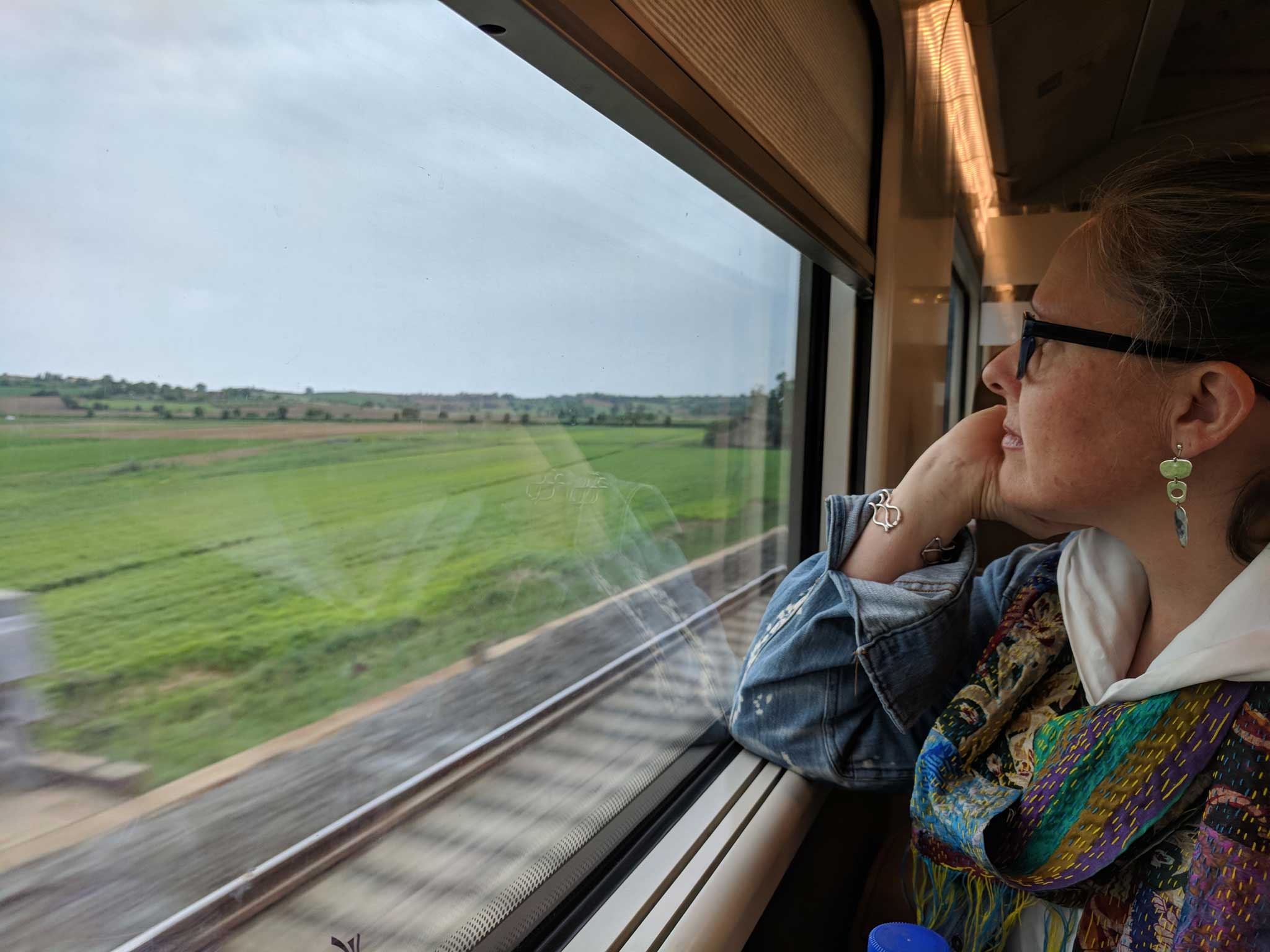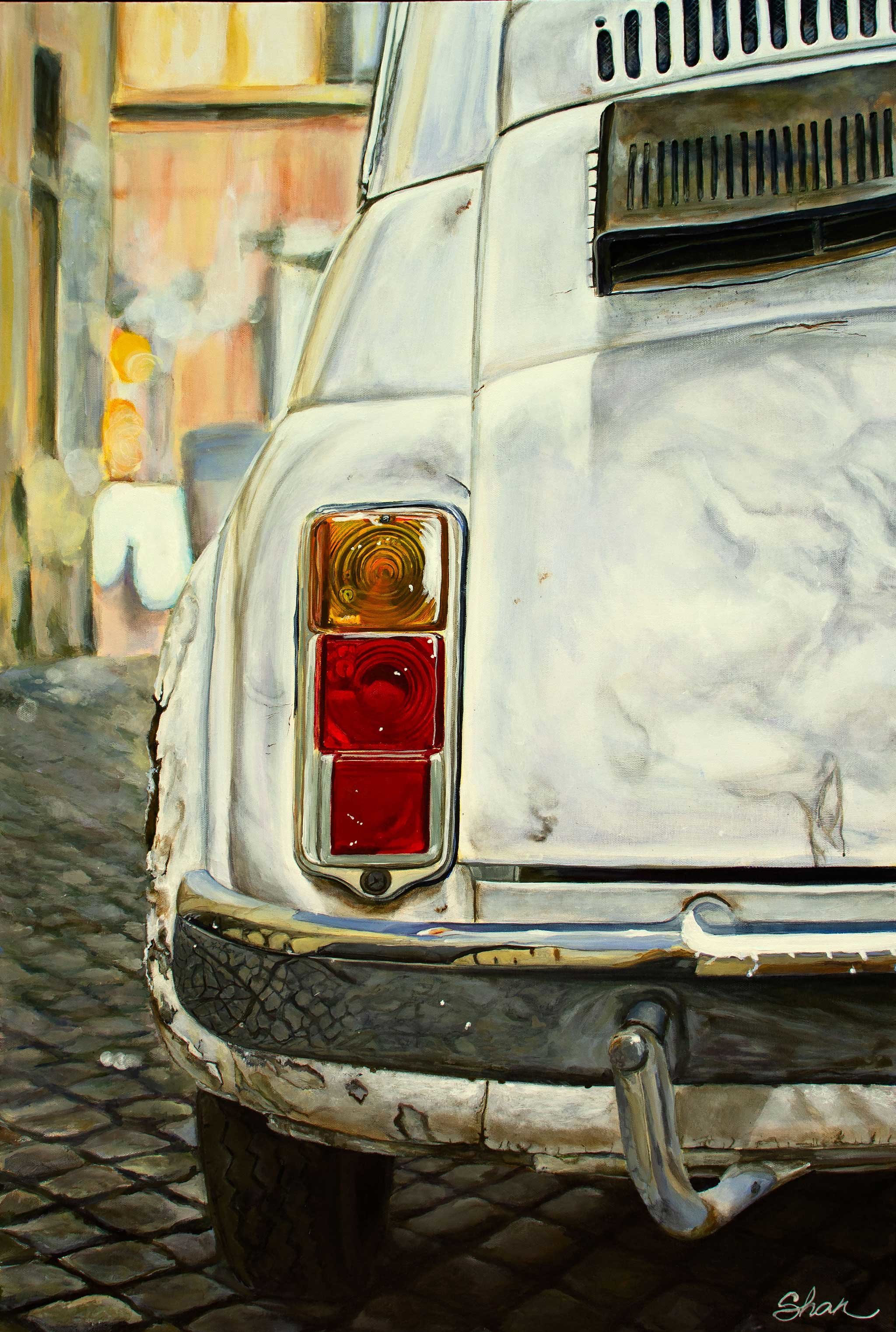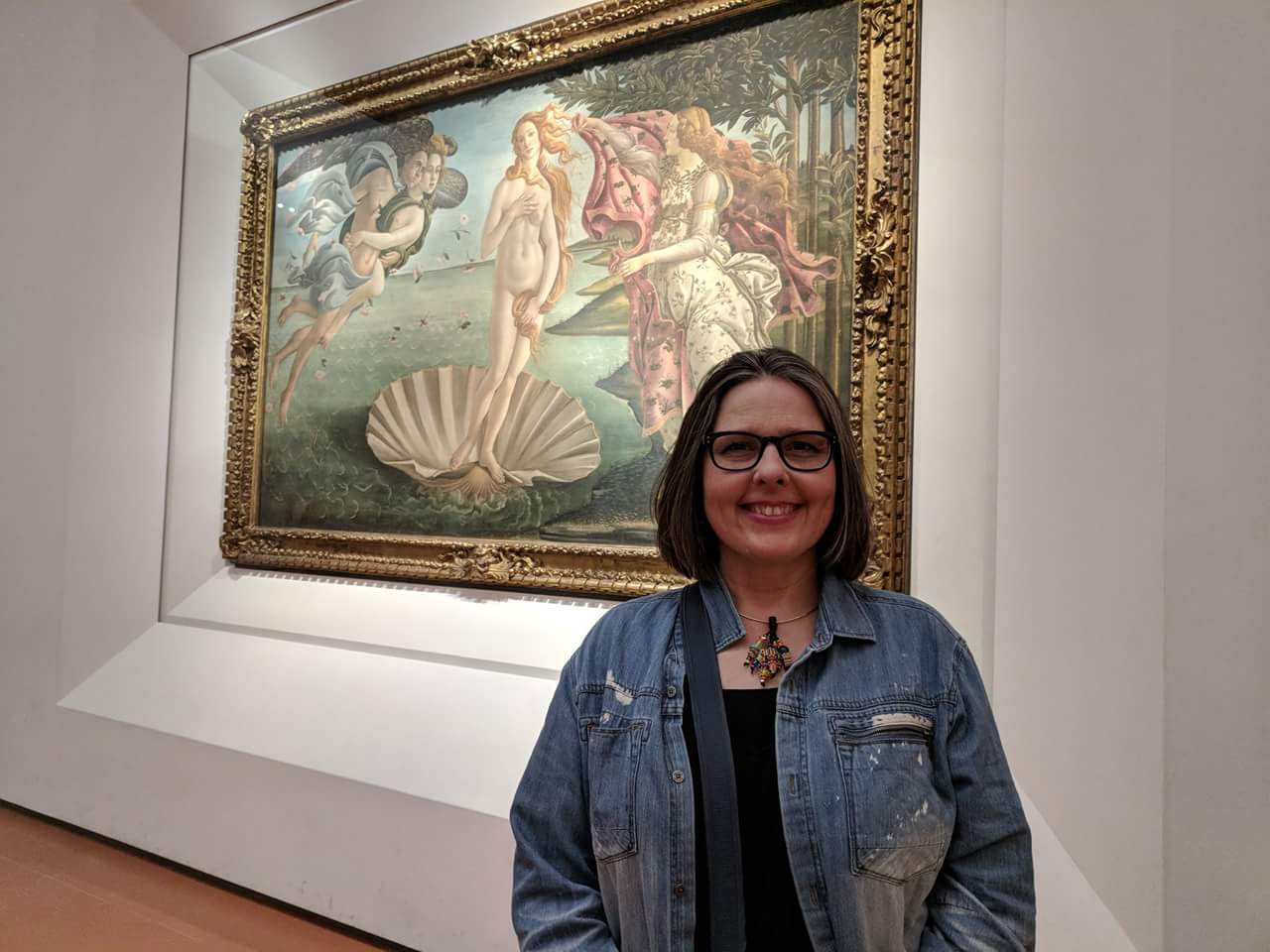Expanding Your Creativity Through Travel
BY SHAN FANNIN
Do you ever find yourself in a creative rut? You’ve worked hard to find your style, and have established a portfolio that conveys your vision. Suddenly one day, you reach a point where you feel creatively drained and uninspired. How do you refuel that fire and find your passion for creating? For me, I’ve found traveling for my art to be the answer.
No matter what art we create, we can always find inspiration by stepping away from our studio. Sometimes a simple nature walk, long drive, gallery exhibit, or concert can get the new ideas flowing. When those don’t get us out of the funk, completely getting away from our comfort zone may do the trick.
No matter what art we create, we can always find inspiration by stepping away from our studio. Sometimes a simple nature walk, long drive, gallery exhibit, or concert can get the new ideas flowing. When those don’t get us out of the funk, completely getting away from our comfort zone may do the trick.
Traveling for our art careers has many benefits. Besides visiting new locations, it allows us to meet other artists and decision makers in our industry, visit galleries and museums, and even create art in a new setting.
To put things into context, we’ll use a few examples. Let’s say you are a botanical painter. You have painted subjects from your local environment, but find you need to expand your subject matter. How about contacting commercial growers, local nurseries, state, national, and international gardens, museums, universities, and societies to arrange an inspiring trip?
To put things into context, we’ll use a few examples. Let’s say you are a botanical painter. You have painted subjects from your local environment, but find you need to expand your subject matter. How about contacting commercial growers, local nurseries, state, national, and international gardens, museums, universities, and societies to arrange an inspiring trip?
Perhaps you are a figurative artist. You’ve attend model sessions with your local art organization, drawn your friends and family members, and have even hired a model. You still feel you need more subjects. Switch things up by traveling to a location with people you can observe in a different setting. Perhaps attend an amusement park, festival, or ride a subway/bus/train. Looking for even more inspiration? Why not travel to a new state or even country for your muse? Visit a culture you’ve never been in. The clothing, surroundings, and daily lives you’ll experience in a new culture may be just what you need for a whole new series of work.
As for me, I recently found myself uninspired. I am a realist vehicle painter, and needed to expand my core subjects. To get out of my funk, my husband and I saved up for two years to go to Italy. With some planning, our trip was exactly what I needed to renew my energy and get back to the easel.
As for me, I recently found myself uninspired. I am a realist vehicle painter, and needed to expand my core subjects. To get out of my funk, my husband and I saved up for two years to go to Italy. With some planning, our trip was exactly what I needed to renew my energy and get back to the easel.
If you are considering a trip for your art career, here are some ways to lay groundwork before you go.
Decisions, Decisions
1. Make a list of locations near and far that would benefit your career and inspire you. What will your budget allow? Perhaps taking a closer trip works in the near future, but you can start saving for a grander visit abroad down the line. Write out your goals and ways to save for them. It is never too late to start!
2. Once you’ve decided where to go, do your research to see if there are residencies, retreats, or workshops offered there. This is a great way to save money, as most of these organizations offer lower cost airfare and accommodations. They may also have connections for purchasing less-expensive art supplies. You can also contact your local, state, and national art organizations regarding putting together a trip. This is especially helpful if you are a plein air artist, since locations that are usually closed to the public may be willing to host a special art event. Colleges with art departments also offer traveling abroad for painting, drawing, and art history at a deep discount.
2. Once you’ve decided where to go, do your research to see if there are residencies, retreats, or workshops offered there. This is a great way to save money, as most of these organizations offer lower cost airfare and accommodations. They may also have connections for purchasing less-expensive art supplies. You can also contact your local, state, and national art organizations regarding putting together a trip. This is especially helpful if you are a plein air artist, since locations that are usually closed to the public may be willing to host a special art event. Colleges with art departments also offer traveling abroad for painting, drawing, and art history at a deep discount.
3. If you decide to travel without utilizing any of the above, you have more freedom to plan your itinerary. What museums, galleries, businesses, and open art studios will be available to you? Contact these entities in advance with an introduction. Email is convenient, but I’ve found that a handwritten note with business card gets far more attention. Often, these places will get back to you with best days to visit, and may even allow you to come during special hours not open to the general public.
It's All in the Preparation
1. Having business cards and a travel portfolio to take on your trip is a must. There are inexpensive ways to create a travel portfolio or photo book online through companies like Snapfish, Moo, and Vistaprint, among others. Your local photo department may even be able to create one for you. If you are traveling abroad, make sure your business cards have your country code and country listed. This is especially helpful if you are visiting galleries or businesses that you would be interested in working with.
2. Will you be creating work on your travels? If so, what art supplies and materials will you need? Do you have room to take them with you, or should you purchase them once you get to your destination? If you are purchasing art supplies at your destination, look for local art suppliers. You may even be able to put in your order early for pick up once there. If you are shipping your supplies to yourself, which many do for retreats and workshops, make these arrangements early so your items arrive on time.
2. Will you be creating work on your travels? If so, what art supplies and materials will you need? Do you have room to take them with you, or should you purchase them once you get to your destination? If you are purchasing art supplies at your destination, look for local art suppliers. You may even be able to put in your order early for pick up once there. If you are shipping your supplies to yourself, which many do for retreats and workshops, make these arrangements early so your items arrive on time.
3. Do research on special events during your visit. Fairs, parades, markets, concerts, exhibitions, and shows are all wonderful opportunities to find inspiration and material for future work.
4. Take a good camera! Even if you are a plein air artist, there are times when you can’t paint when you see something inspiring. Photography is a fantastic way to capture a scene or moment for future reference. Don’t be afraid to photograph that sunset, flower, still life, or person now so you can create a masterpiece from it later.
4. Take a good camera! Even if you are a plein air artist, there are times when you can’t paint when you see something inspiring. Photography is a fantastic way to capture a scene or moment for future reference. Don’t be afraid to photograph that sunset, flower, still life, or person now so you can create a masterpiece from it later.
I'm Here, Now What?
1. Confirm with the organizations and/or individuals you contacted previously about your visit. Be punctual on your arrival, and leave them with your business card once your visit is complete.
2. Purchase art supplies at your destination as needed.
3. Take notes. Picking up a small journal or notebook for keeping thoughts in is a great idea. Write what you see, what you experience, and how you feel. Your words will help you when you get back into the studio. They can also jog your memory later when you are going through your photos and sketches from your trip.
2. Purchase art supplies at your destination as needed.
3. Take notes. Picking up a small journal or notebook for keeping thoughts in is a great idea. Write what you see, what you experience, and how you feel. Your words will help you when you get back into the studio. They can also jog your memory later when you are going through your photos and sketches from your trip.
4. KEEP YOUR RECEIPTS! Anything pertaining to your art on your trip can be considered for a business deduction. This includes airfare, car rental, museum fees, supplies, workshop costs, shipping art home, etc.
NOTE: If you are out of country with a different exchange rate, make a note of that rate. You’ll need to know it when you do your taxes. It is also a good idea to write down what you purchased on receipts that are in a foreign language. I don’t speak Italian and had a pile of receipts when our trip was completed. I made a note of what I bought and the date so I could match my receipt to the purchase.
5. Get your art home. Any art you have created can either travel home with you, or be shipped. Note that shipping items home will add to your trip cost and will take a while to arrive home. Be sure to package your art with care as you want your creations to arrive safely.
NOTE: If you are out of country with a different exchange rate, make a note of that rate. You’ll need to know it when you do your taxes. It is also a good idea to write down what you purchased on receipts that are in a foreign language. I don’t speak Italian and had a pile of receipts when our trip was completed. I made a note of what I bought and the date so I could match my receipt to the purchase.
5. Get your art home. Any art you have created can either travel home with you, or be shipped. Note that shipping items home will add to your trip cost and will take a while to arrive home. Be sure to package your art with care as you want your creations to arrive safely.
Back to Home, Sweet Home
1. Write a personalized thank you note to the organizations and individuals that allowed you to visit them. I prefer sending a handwritten note card with my art on it along with an additional business card. Most people will send an email, but taking the time to write someone shows they are worth the extra effort. That little step makes a lasting impression that might bring you a commission, collaboration, or representation in the future.
2. Make a file with your best photos and sketches from the trip or set aside those drawings you want to expand on. Doing this within a few days of returning home keeps the situation fresh in your mind. You can easily add notes now that you can refer to later.
3. Organize your receipts for future taxes. Your tax preparer will thank you for this come next April.
2. Make a file with your best photos and sketches from the trip or set aside those drawings you want to expand on. Doing this within a few days of returning home keeps the situation fresh in your mind. You can easily add notes now that you can refer to later.
3. Organize your receipts for future taxes. Your tax preparer will thank you for this come next April.
4. Open your journal or notebook and write down things you would like to add. Make notes of what you would like to create from your trip, a possible new series, or even goals for the future.
5. Start that new artwork.
6. Plan your next travel adventure.
5. Start that new artwork.
6. Plan your next travel adventure.
The world is an amazing place full of amazing things. When you feel uninspired, try getting out of your studio and travel for your art. You never know what that trip will do for your creativity and career.
ABOUT THE AUTHOR
Shan Fannin is a Realist Vehicle artist in Austin, TX. She is a guest writer for Artists on Art magazine, Create!, Where Women Create Business, and Manhattan Arts International. She is represented by Skidmore Contemporary Gallery, Good Art Company Gallery, L’Atelier Berkshires Gallery, and Reno Soto Gallery. Several works are also available on Artsy and through Zhou B Art Center Gallery. She has traveled to England and Italy for her art career, and plans to visit Germany and Japan in the near future.
Artists On Art magazine ● July/August 2018 ● www.ArtistsOnArt.com





